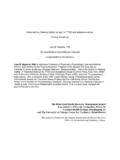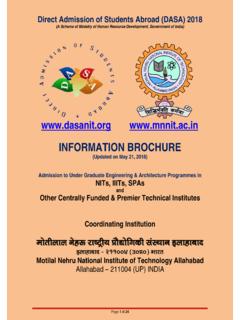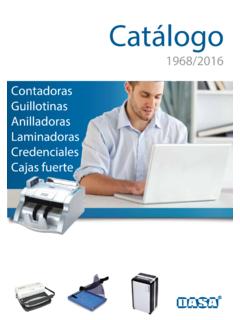Transcription of Manual for Recovery Coaching and Personal Recovery Plan ...
1 Manual for Recovery Coaching and Personal Recovery plan development Draft (without Chapter 10). Check for continual updates July 25, 2005. David Loveland, Director of Research Fayette Companies Peoria, Illinois Michael Boyle, MA. President and CEO. Fayette Companies Peoria, Illinois Funding for the development of this Manual was provided by the Illinois Department of Human Services Department of Alcoholism and Substance Abuse 1. Table of Contents CHAPTER 1: INTRODUCTION TO THE Recovery COACH PROGRAM .. 4. An Overview of the Recovery Coach Program ..4. Need for Comprehensive Services ..4. Research on Case Management in Addiction Overview of the Principles of the Recovery Coach Program ..8. Purpose of this Manual .. 11. CHAPTER 2: STRUCTURAL ASPECTS OF IMPLEMENTING THE Recovery . COACH PROGRAM .. 12. Establishing Billing Policies .. 12.
2 Overcoming Documentation Barriers .. 13. Establishing an Advisory Committee .. 14. Involving Staff in the Implementation Process .. 15. Establish Procedural Guidelines .. 16. Housing the Recovery Coach 17. Recovery Coach Supplies .. 17. Staff Qualifications .. 17. CHAPTER 3: TRAINING AND SUPERVISING Recovery COACHES .. 19. Initial Training Protocol .. 19. Additional Resources and Recommended 23. Ongoing Supervision and Staff 23. Establishing Admission Criteria .. 28. Referral Process .. 28. Engagement Process .. 29. Establishing Caseload Size .. 29. 2. CHAPTER 5: INTEGRATING Recovery COACHES WITH ADDICTION. TREATMENT SERVICES .. 30. Coordinating Phases of Treatment .. 30. Team Planning of the RC 31. Recovery Planning .. 31. CHAPTER 6: ENGAGING PEOPLE IN THE Recovery COACH PROGRAM .. 33. Transtheoretical Model of Change .. 33. Motivational Interviewing and Practices.
3 35. Contingency Management Principles and 39. Tailoring RC Services .. 43. CHAPTER 7: STRENGTHS-BASED Recovery PLANNING .. 45. Principles of the Strengths Model of Case 45. Developing a Recovery plan .. 46. Specific Steps of the Recovery 55. CHAPTER 8: EXPANDING Recovery CAPITAL .. 58. CHAPTER 9: BEHAVIORAL PROBLEM SOLVING .. 62. Assessing Behavior-Functional Analysis .. 62. Developing a Problem-solving 66. Developing Weekly Behavioral Plans .. 67. Practicing the Problem-solving plan : Developing Behavioral Skills .. 68. References .. 70. APPENDIX A .. 80. APPENDIX B .. 85. APPENDIX C .. 87. APPENDIX D .. 88. 3. Chapter 1: Introduction to the Recovery Coach Program An Overview of the Recovery Coach Program The Recovery coach program is an intensive, community-based case management program for people who have entered an addiction treatment program or have been screened for treatment, but have been placed on a waiting list.
4 The program is designed as an integrated component of a comprehensive addiction treatment program. The primary purpose of the Recovery coach program is to help individuals in addiction treatment gain access to needed resources, services, or supports that will help them achieve Recovery from their substance use disorder (heretofore referred to as an SUD). Recovery coaches can help individuals address multiple domains in the their life that have been impacted by their SUD, but are difficult to address within the structure of most addiction treatment programs, such as returning to employment or finding stable housing. Recovery coaches can also help individuals transition through the continuum of addiction treatment ( , from detoxification to aftercare). Finally, Recovery coaches can help individuals sustain their Recovery after the formal addiction treatment component has been completed through consultation, skills training, and, of course, Coaching .
5 Most individuals who enter an addiction treatment program present with multiple problems in living, comorbid psychiatric disorders or medical conditions in addition to their substance use disorder (Chen et al., 2004; Gutman, Ketterlinus, & McLellan, 2003; Shwartz, Baker, Mulvey, &. Plough, 1997; Stein & Friedman, 2002; McLellan et al., 1994); however, most treatment providers are not equipped to address these interrelated issues beyond a person's substance abuse behaviors (McLellan et al., 1999; Friedmann, Alexander, Jin, & D'Aunno, 1999; Etheridge, Craddock, Dunteman, & Hubbard, 1995). These co-occurring conditions, disorders, and unresolved problems in daily living ( , lack of affordable housing, unemployment) can undermine or, at least, diminish the impact of effective treatment interventions and lead to disengagement (Blomqvist, 1996; Godley et al.)
6 , 2004; Grella et al., 1996; Larimer & Kilmer, 2000). Conversely, access to and receipt of a comprehensive array of medical, psychiatric and psychosocial services has been shown to improve engagement, retention, and treatment outcomes for individuals receiving addiction treatment services (Hser et al., 1999; McLellan et al., 1993 Pringle et al., 2002). Unfortunately, the availability and overall range of these ancillary services provided by addiction treatment organizations has diminished over time (Etheridge, Hubbard, Anderson, Craddock, & Flynn, 1997; Hser et al., 1999; McLellan et al., 1999; Friedmann et al., 1999; Durkin, 2002). Because most treatment providers are unable to provide a comprehensive array of services on site, an alternative solution is to help individuals acquire these services in the community. The Recovery coach program can be used to help individuals successfully link to and effectively use resources in the community while they receive treatment for their addiction.
7 Need for Comprehensive Services Research has consistently supported the tenant that addiction treatment is generally effective at helping many individuals reduce their SUD. Research has also revealed, however, that many 4. individuals drop out of treatment, relapse within three to six months after completing treatment, or require multiple treatment episodes before achieving a sustained period of abstinence. Factors associated with an increased risk of relapse during or after treatment can include: (1) severity of the SUD at admission, (2) having more service needs at admission, (3) the presence of an active mood, anxiety, or personality disorder (or symptoms), (4) perceived high rates of stress, (5). being unemployed or having employment problems, (6) being of a minority status, (7) having less coping resources or a low sense of self efficacy, (8) low income or being indigent, (9).
8 Having a PTSD or ADHD disorder at admission, and (10) actively participating in drug-related leisure activities (Brewer, Catalano, Haggerty, Gainey, & Fleming, 1998; Grella, Hser, & Hsieh, 2003; Kubiak, 2004; Larimer & Kilmer, 2000; McLellan et al., 1994; Miller & Westerberg, 1996; Schutte, Nichols, Brennan, & Moos, 2003; Simpson et al., 1999; Walton, Blow, Bingham, & Chermack, 2003; White et al., 2004). Individuals who require professional interventions to overcome their SUD experience more alcohol and drug related problems and have a more intensive pattern of drug or alcohol use, limited or no social support, lower paying jobs, higher rates of mental illness, and an earlier onset of their SUD, on average, than those who are able to achieve Recovery without a formal intervention (Cunningham, 2004; Larimer & Kilmer, 2000; Sobell et al.)
9 , 1996; Granfield &. Cloud, 2001). These differences account for the higher rates of mental illness, medical problems, and limited resources or copings skills that characterize individuals in addiction treatment services than what we would expect to find in the general population of individuals with an SUD ( , see highlights from the 2003 National Survey on Drug Use and Health [NSDUH]; SAMHSA, 2004). Addiction treatment appears to be the safety net or final option for many individuals who have been unable to achieve Recovery on their own and, by default, consists of people who have multiple complicated issues and minimal resources. As noted, many of these co-occurring disorders and psychosocial problems can undermine the impact of addiction treatment, lead to relapse, or, in the case of extreme problems in living, such as being homeless or re-victimized, dwarf the goal of Recovery .
10 Research has shown that people report multiple needs upon admission in addiction treatment programs, but less than a third of these needs, which are beyond specific substance use behaviors, are treated or addressed in treatment (Hser et al., 1999; Friedmann, Hendrickson, Gerstein, & Zhang, 2004; McLellan et al., 1993; Pringle et al., 2002). However, this same research has also shown a positive and fairly consistent relationship between the total number and portion of people's reported needs that are treated ( , the need for food, clothing, housing, transportation, medical care, childcare, and family, psychiatric or vocational counseling), and improved treatment outcomes, including increased retention in treatment and a reduction in substance use behaviors over time (Friedman et al., 2004; Hser et al., 1999; McLellan et al., 1993; Pringle et al.)








